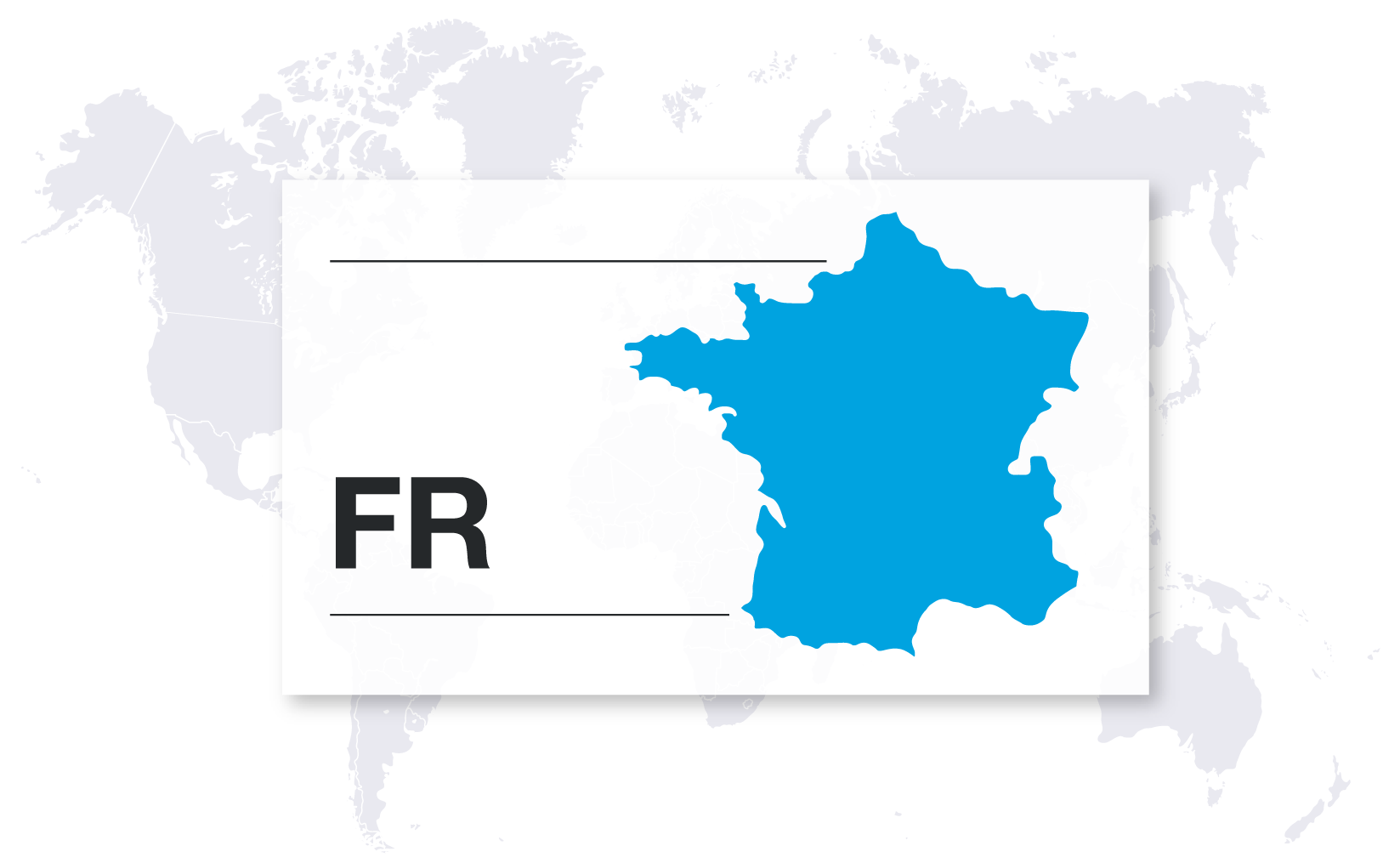France Gender Pay Gap Reporting Law Guide


Introduction
France first introduced an equal pay law in December 1972. Since then, regulations have been implemented to strengthen legislation and further reduce gender pay gaps.
The Gender Equality Index of 2018 (Index de l'égalité professionnelle femmes-hommes) is a comprehensive tool for gender pay gap reporting. It aims to promote pay transparency, identify areas for improvement and drive actions to achieve gender pay equality.
Employers with more than 50 employees are required to report annually on their pay gap and calculate their overall score.
Published in December 2021, the "Rixain law" also aims to achieve gender parity among senior executives and members of management bodies in large organizations (more than 1,000 employees).
Contact us
France Reporting Requirements
Who Needs to Report?
Employers with 50 or more employees on March 1st of the year preceding the reporting year must comply with the requirements listed below. Applicability testing must be conducted annually.
What to Report?
The Gender Equality Index comprises four or five indicators, depending on organization size. Each indicator contributes to the employer's final score, out of 100 points.
A detailed supporting analysis is also required from all employers on their methodology, the composition of employees by socio-professional category, and job rating levels.
Calculating Your Gender Equality Index
Companies with 50-250 employees (four indicators):
- Pay gap between men and women average remuneration based on defined groupings. Grouped by age (under 30; 30-39; 40-49; 50 and over) and job category (40 points).
- Employers aim to reduce the gender pay gap to zero to achieve the maximum score of 40 points
- Difference in rate of individual pay increases between women and men, when including promotions (35 points).
- Employers with no difference in rates of pay increases between men and women achieve the maximum score of 35 points
- Percentage of employees benefiting from a salary raise in the year following their return from maternity leave (15 points).
- Employers that grant a raise to all women returning from maternity leave will receive the maximum score of 15 points.
- Number of employees of the underrepresented sex among the 10 highest-paid employees (10 points).
- Employers that promote gender parity in high-earning positions (i.e. no less than 4 females or males in the top 10 highest earning positions) will receive the maximum score of 10 points.
The overall score is the total of the points for each of the four indicators.
Companies with more than 250 employees (5 indicators):
- Pay gap between men and women average remuneration based on defined groupings. Grouped by age (under 30; 30-39; 40-49; 50 and over) and job category (40 points).
- Employers aim to reduce the gender pay gap to zero to achieve the maximum score of 40 points.
- Difference in rate of individual pay increases between women and men (20 points).
- Employers with no difference in rates of pay increases between men and women achieve the maximum score of 35 points.
- Percentage of employees benefiting from a salary raise in the year following their return from maternity leave (15 points).
- Employers that grant a raise to all women returning from maternity leave will receive the maximum score of 15 points.
- Difference in rate of individual pay increases between women and men, when excluding promotions (20 points).
- Employers aim to promote women to an equal rate to men to achieve the maximum score of 15 points
- Number of employees of the underrepresented sex among the 10 highest-paid employees (10 points).
- Employers that promote gender parity in high-earning positions (i.e. no less than 4 females or males in the top 10 highest earning positions) will receive the maximum score of 10 points.
The overall score is the total of the points for each of the five indicators.
Progress Objective and Corrective Measures
Overall score less than 85 points: The employer must set and publish targets for the progress of each indicator where the maximum score has not been reached.
Overall score less than 75 points: Employers must include corrective measures in their posting and reporting, and where applicable the programming of salary catch-up measures. These employers have 3 years to improve their gender pay gaps.
Corrective measures and targets should be viewable on the employer's website until a sufficient score is obtained. Targets and corrective measures will depend on the employer's internal compensation, hiring, promotion and HR practices.
Decree 2022-243 sets out the steps that companies are required to take to eliminate pay gaps and improve their score under the Gender Equality Index.
Where and When to Report?
Relevant employers must report on the above mentioned requirements as follow:
Regulatory Filing: Employers are required to file the Gender Equality Index, progress targets and corrective measures and accompanying information to the Ministry of Labor. Submission via an online form, accessible on the Index Egapro website.
External Posting: Publish the Gender Equality Index, progress targets and corrective measures and any accompanying information on the company website. In the absence of a website, progress objectives and corrective measures are brought to the attention of employees by any means.
Internal Disclosure: Results must be made available to the Social and Economic Committee (CSE), a representative body for staff in the company, via the Economic and Social Database.
Deadlines and Cadence: The Gender Equality Index, progress targets, corrective measures, and any accompanying information must be reported annually by March 1st for all relevant employers.
Balanced Representation in Management Positions in Large Companies
In addition to the The Gender Equality Index compliance requirements, the Rixain Law introduced quotas in management bodies for large organizations. Employers with at least 1,000 employees for the third consecutive year must calculate and publish differences in representation between women and men among their senior managers and members of their governing bodies, in addition to their efforts to communicate these findings to the social and economic committee.
Relevant employers must transmit this information to the administration on the " Balanced representation " declaration portal.
Quotas under the law require a minimum of 30% of female executives or members of management bodies from March 1, 2026, increasing to 40% from March 1, 2029. Companies then have two years to comply with these objectives or face a financial penalty.
Employment equity standards
The Gender Equality Index is intended to apply the principle of "equal pay for equal work." Employers are required to ensure equal pay for men and women when they perform the same work, or work of equal value. (Article L. 3221-2).
Equal pay must also be guaranteed between employees on permanent contracts and temporary workers, (Article L.1251-18) or those on fixed term contracts, (Article L.1242-15) when they perform the same duties and have an equivalent professional qualification.
Part-time employees and full-time employees with equal qualifications and seniority are also entitled to equal pay. (Article L.3123-5).
Compensation is defined as "ordinary basic or minimum wages or salaries and all other benefits and accessories paid, directly or indirectly, in cash or in kind, by the employer to the employee by reason of the latter's employment." (Article L. 3221-3)
The Risks of Non-Compliance
In the event of failure to publish its results in a visible and readable manner, failure to implement corrective measures or their inefficiency, the company is exposed to a financial penalty of up to 1% of its annual payroll.
Enforcement is overseen by the Ministry of Labor and the Ministry of the Economy and Finance. The Labor Inspector also plays a key role in ensuring compliance. Field agents may also assist in compliance efforts.
Preparing for the EU Pay Transparency Directive in France
On March 30, 2023, the European Union approved a Pay Transparency Directive for its EU member states to close the gender pay gap across the EU. The Directive aims to strengthen the "principle of equal pay for equal work or work of equal value between men and women through pay transparency and enforcement mechanisms."
France and all other EU member states will need to adopt the EU Pay Transparency Directive into law by June 7th, 2026. The first large employers will need to submit pay data reports in compliance with the Directive by June 6th, 2027.
The EU Pay Transparency Directive establishes minimum standards, affording member states the discretion to implement more stringent measures or adapt existing requirements to meet the provisions laid out in the EU Directive. France will provide guidance adjustments to the current Gender Equality Index reporting requirements in due time.
For further guidance on the provisions and compliance requirements as part of the EU Pay Transparency Directive, Trusaic provides resources for EU Preparedness here.
How Can Trusaic Assist with France Compliance?
Trusaic's Workplace Equity product suite can help every employer in France to comply with gender pay gap reporting requirements, and monitor progress objectives and corrective measures where required.
1. Comply - Use Trusaic's GPDR solution to complete required reporting by compliance deadlines:
Applicability Determination: Perform an accurate assessment of your applicability, according to jurisdictional specific definitions and regulatory frameworks so you can understand your reporting obligations across the globe.
Deadline Management: Prepare ahead of time with project timelines, timely notifications, and reminders, to keep you on track to meeting jurisdictional deadlines.
Expert Legal Guidance and Support: Benefit from the expertise of our trusted pay equity attorneys, so you understand your compliance requirements across a diverse global regulatory landscape.
Receive world-class customer support, including assistance throughout the compliance process.
Streamlined Data Extraction: Collect the necessary data for analysis and submission with a simple click of a button; powered by certified data integrations with world's largest HCM, HR and Payroll platforms, including Workday, SAP, UKG and ADP.
Provide data through Trusaic's Workplace Equity platform, a SOC 2 Type II and GDPR-compliant tool for data transmission.
Data Quality Assurance: Trusaic performs data validations to ensure your collected data and information aligns with the standards and definitions provided by each jurisdiction.
Compliant Report Outputs: Take away the burden of reporting by effortlessly generating outputs containing necessary compliance information.
Reporting Checklist: Follow step-by-step guidance on where, when and how to report to any jurisdiction's regulatory body, as well as your required internal disclosure and public posting obligations.
2. Correct - Use PayParity and OpportunityParity to understand, explain and resolve pay disparities:
Risk Assessments: Stay aware of any potential exposure to any government audit or litigation.
Our cross-functional team of data scientists, statisticians, and government regulatory compliance experts have rigorously worked to reverse-engineer the calculations that will be used by jurisdictions to estimate pay disparities, so you can prepare in advance.
Understand your Pay Gaps: Leverage Trusaic's PayParity solution to explain your pay gaps so you can understand the root causes and safeguard from equal pay claims and legal action.
Resolve Pay Disparities: Make pay adjustments where applicable so you can eliminate pay disparities and show improvements in your reported pay gaps from one year to the next.
Identify Barriers to Professional Growth: Ensure workforce diversity and equity with hiring, promotion, retention, and opportunity analytics using OpportunityParity.
3. Communicate - Use Trusaic's Workplace Equity Solution to communicate narrative and share salary ranges with confidence.
Pay Equity Narrative: Communicate the sources of your pay gaps, progress objectives, and corrective measures to employees and internal stakeholders with Trusaic's Workplace Equity product suite.
Show data-backed progress in your pay gaps over time.
Salary Range Explainability: Use Salary Range Finder to establish and post competitive and equitable pay ranges to confidently comply with pay transparency laws.
Mitigate Risk of Recurrent Pay Disparities: Ensure new hires receive fair pay offers with the use of external labor market data and internal pay equity analytics to reduce unplanned and expensive pay remediations.
Sign up for PayParity by May 31, 2024
and receive OpportunityParityTM at no additional cost
Sign up for PayParity by May 31, 2024 and receive OpportunityParityTM at no additional cost
